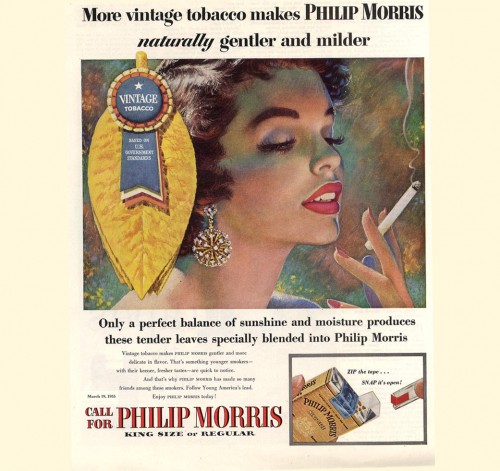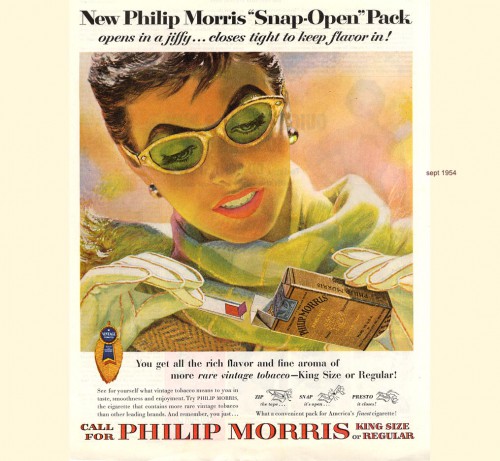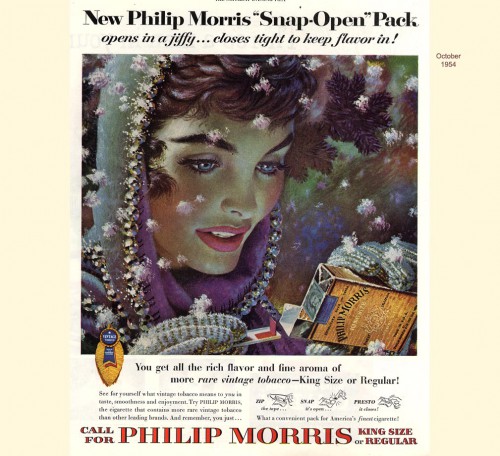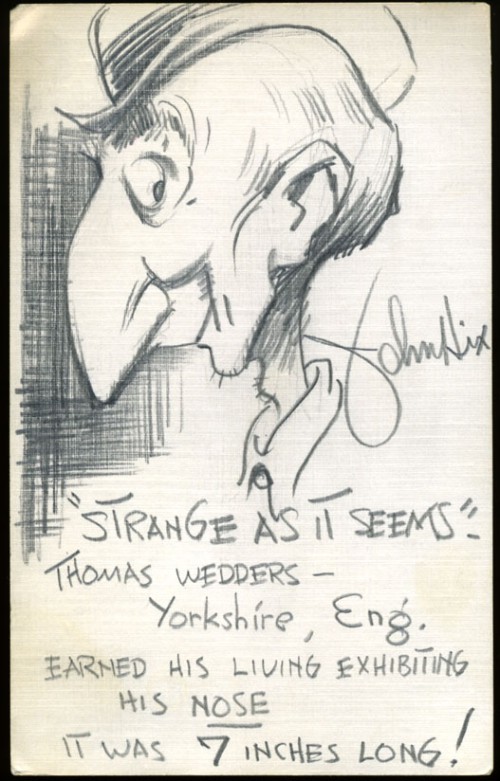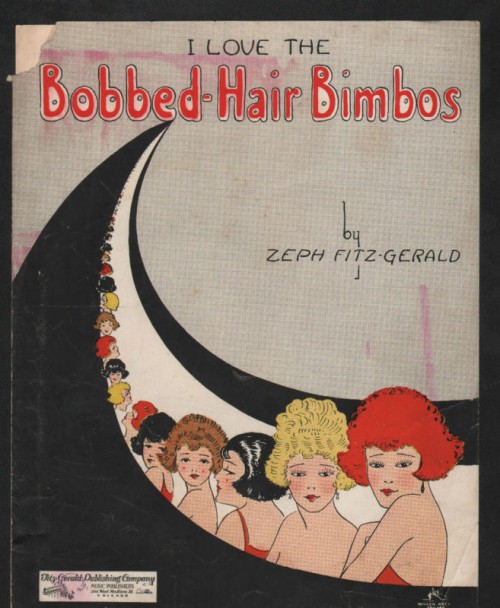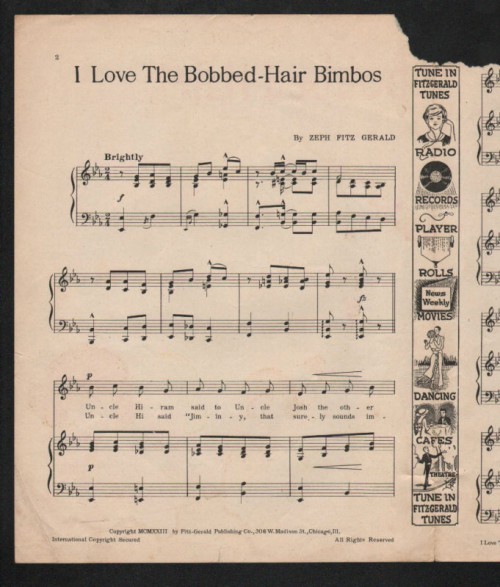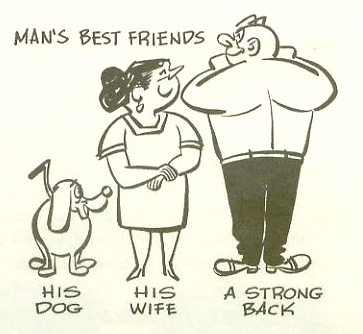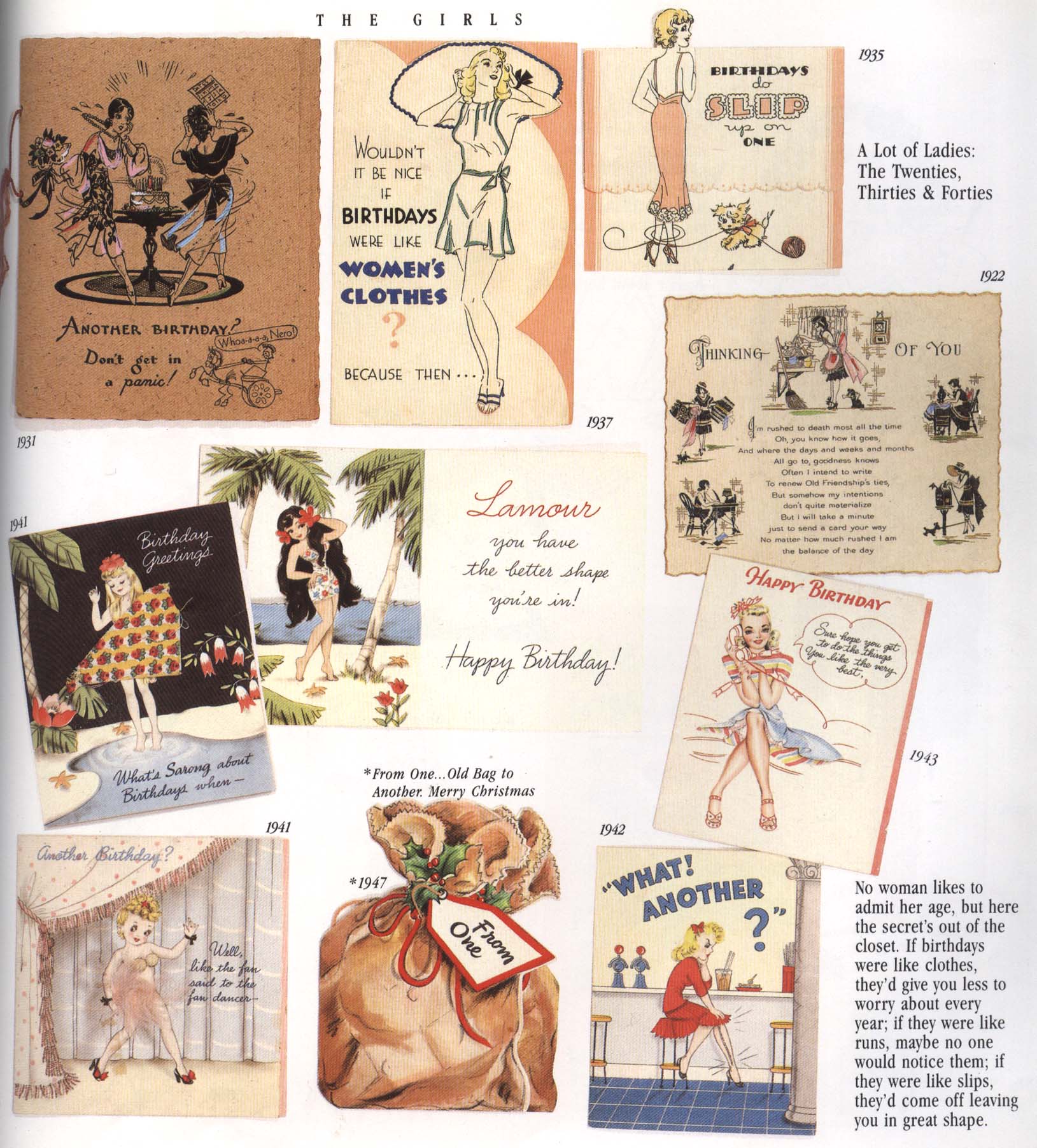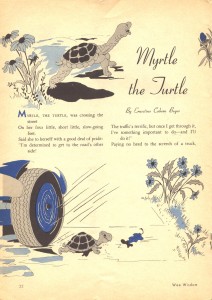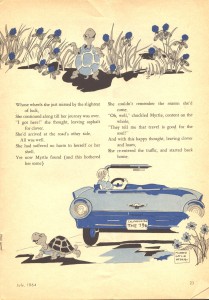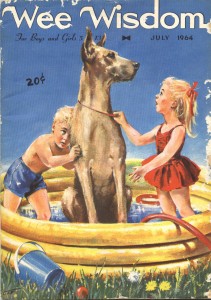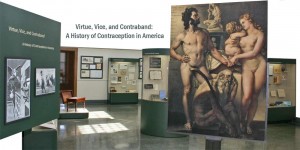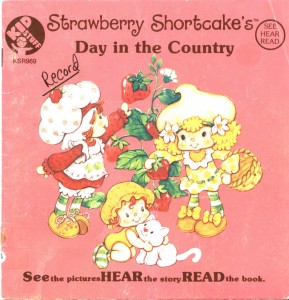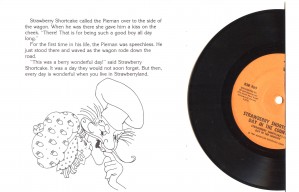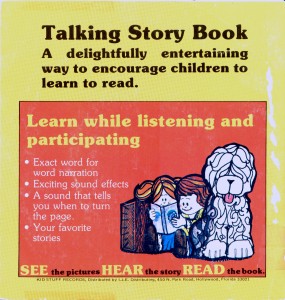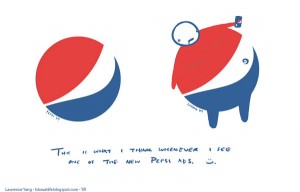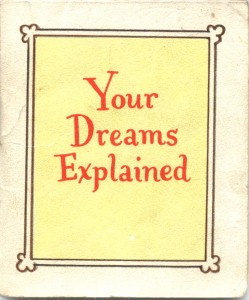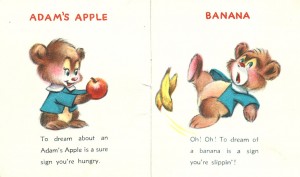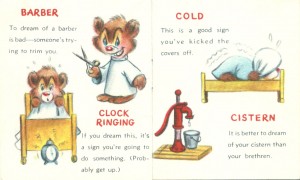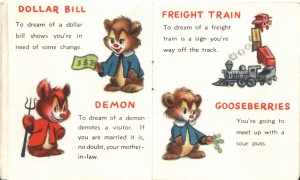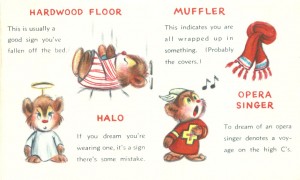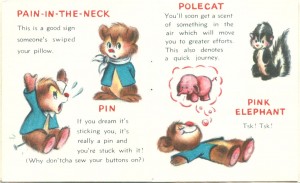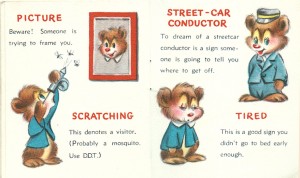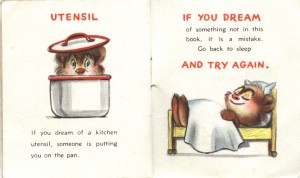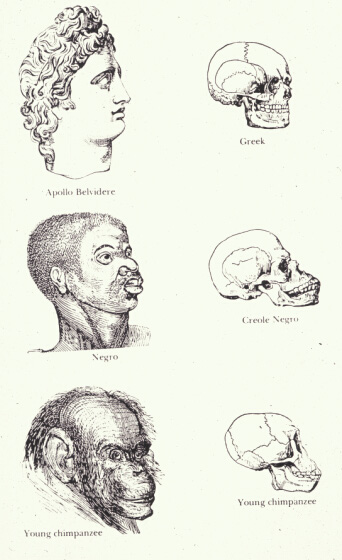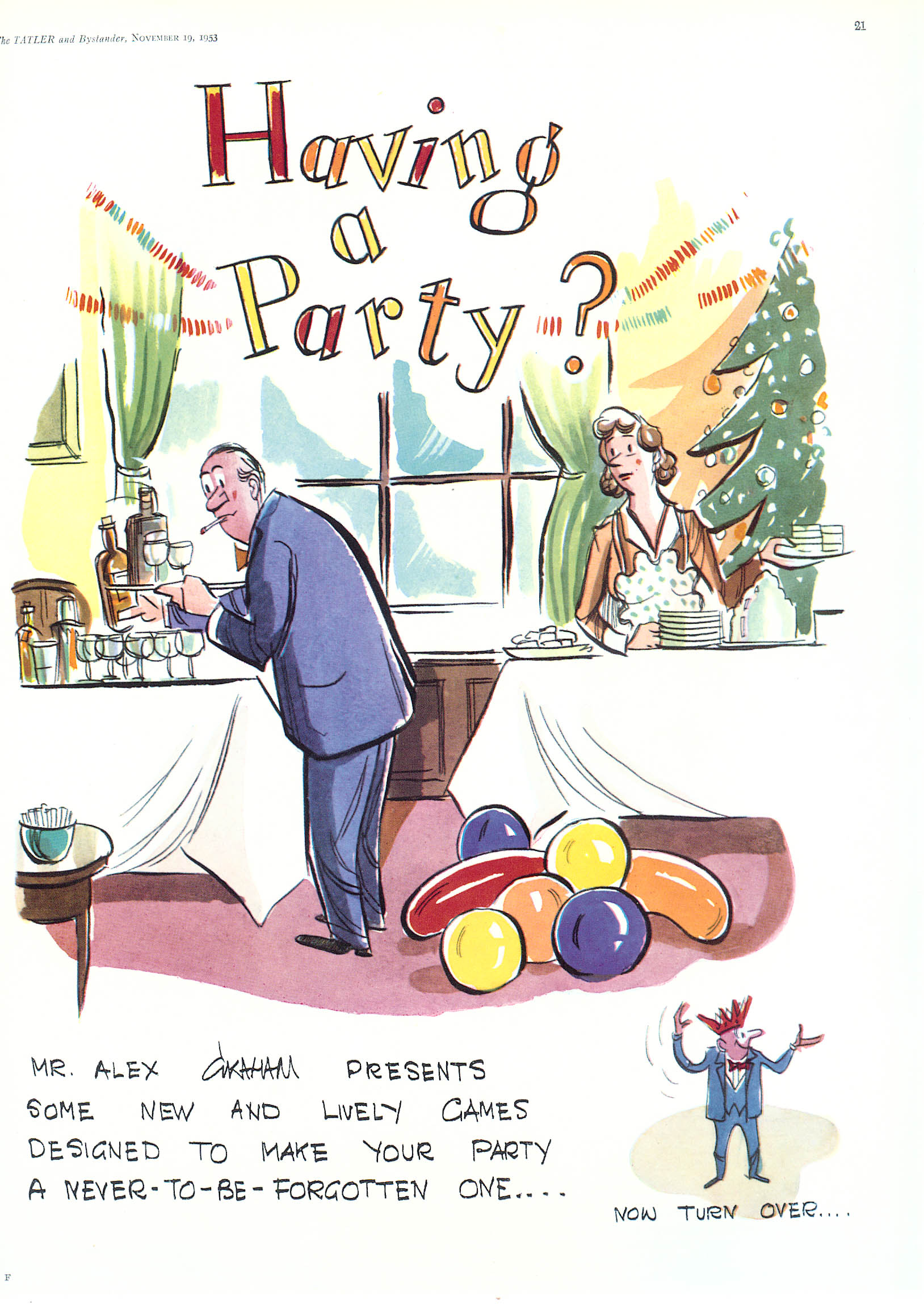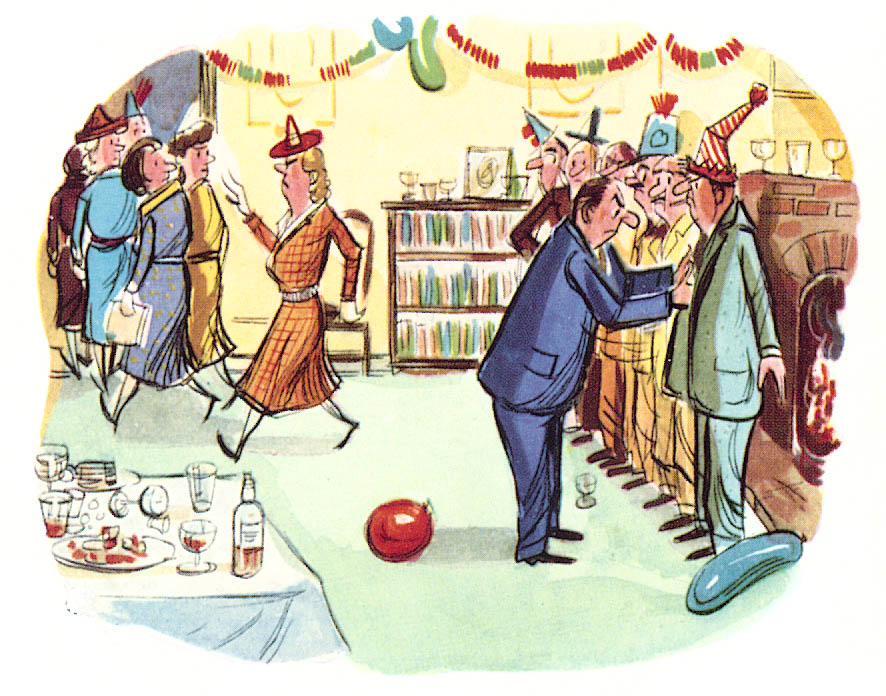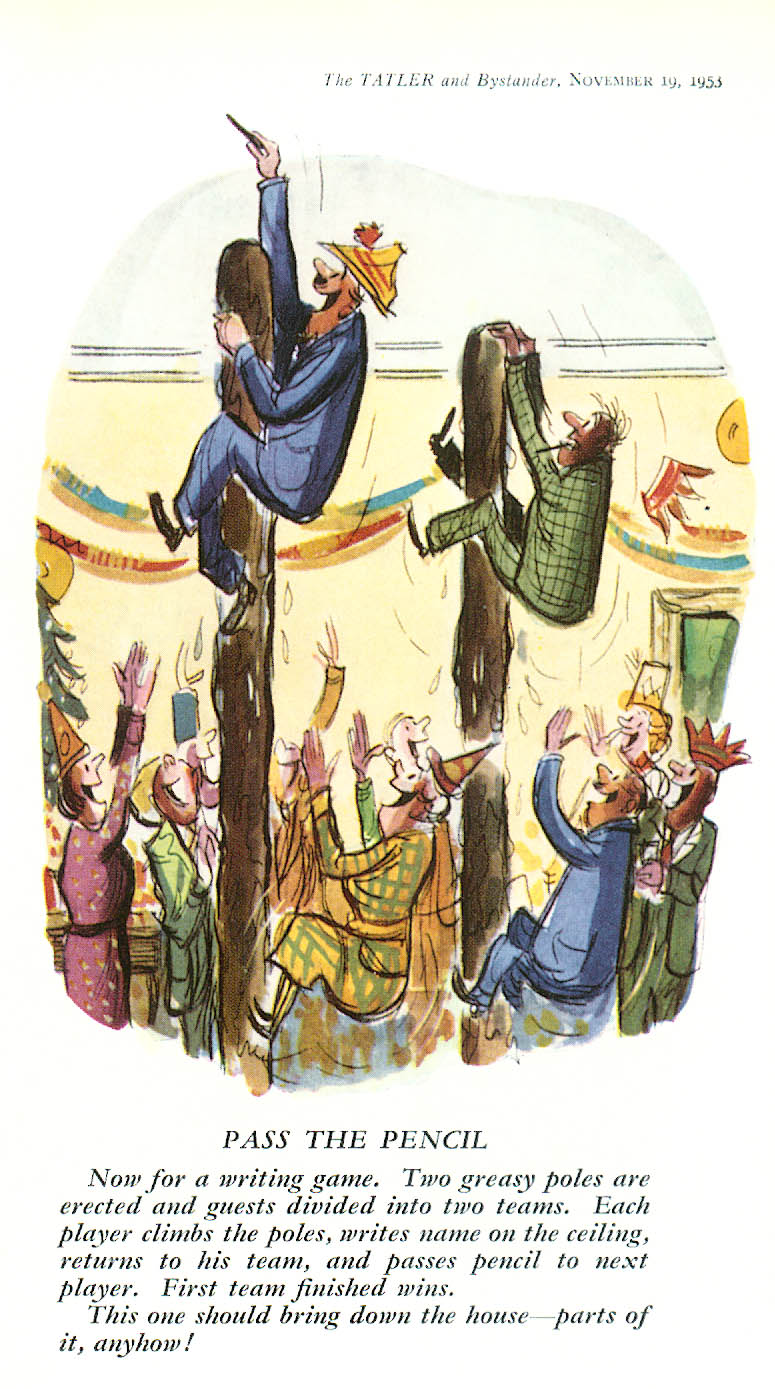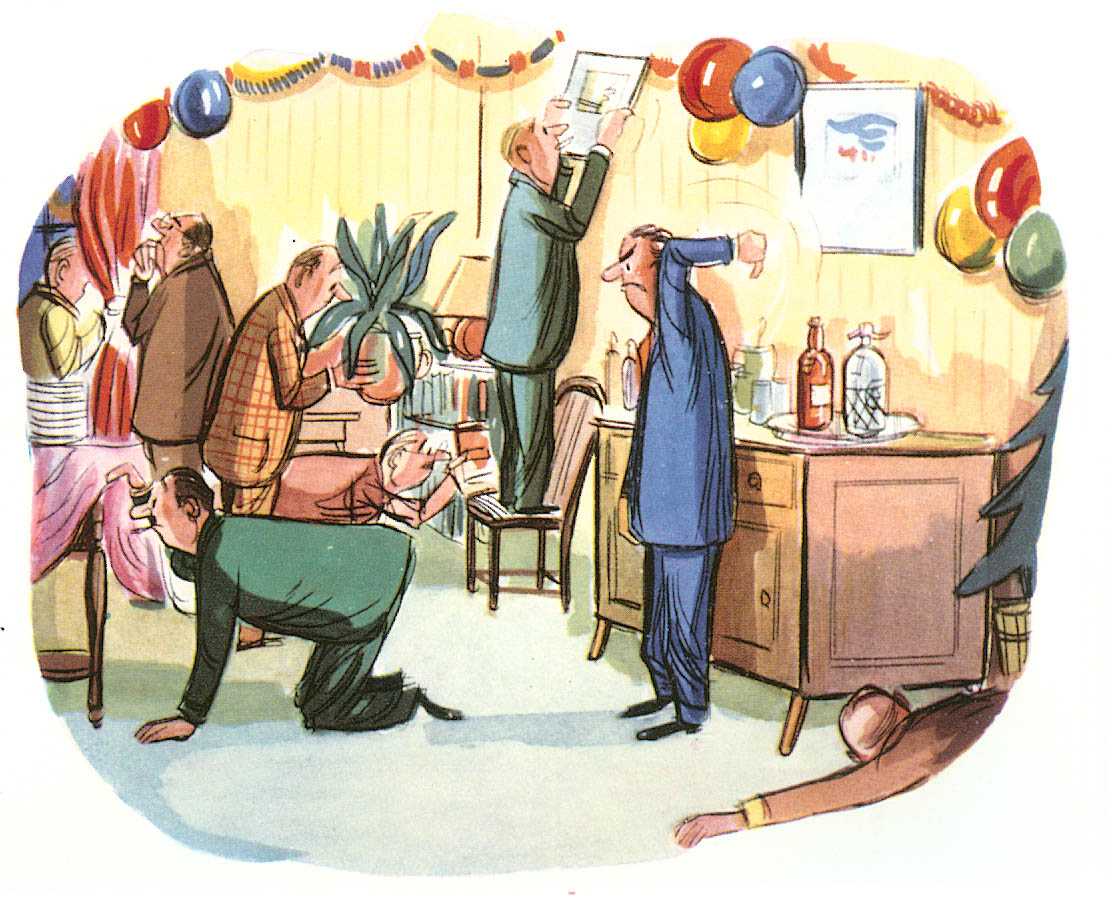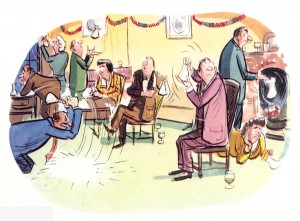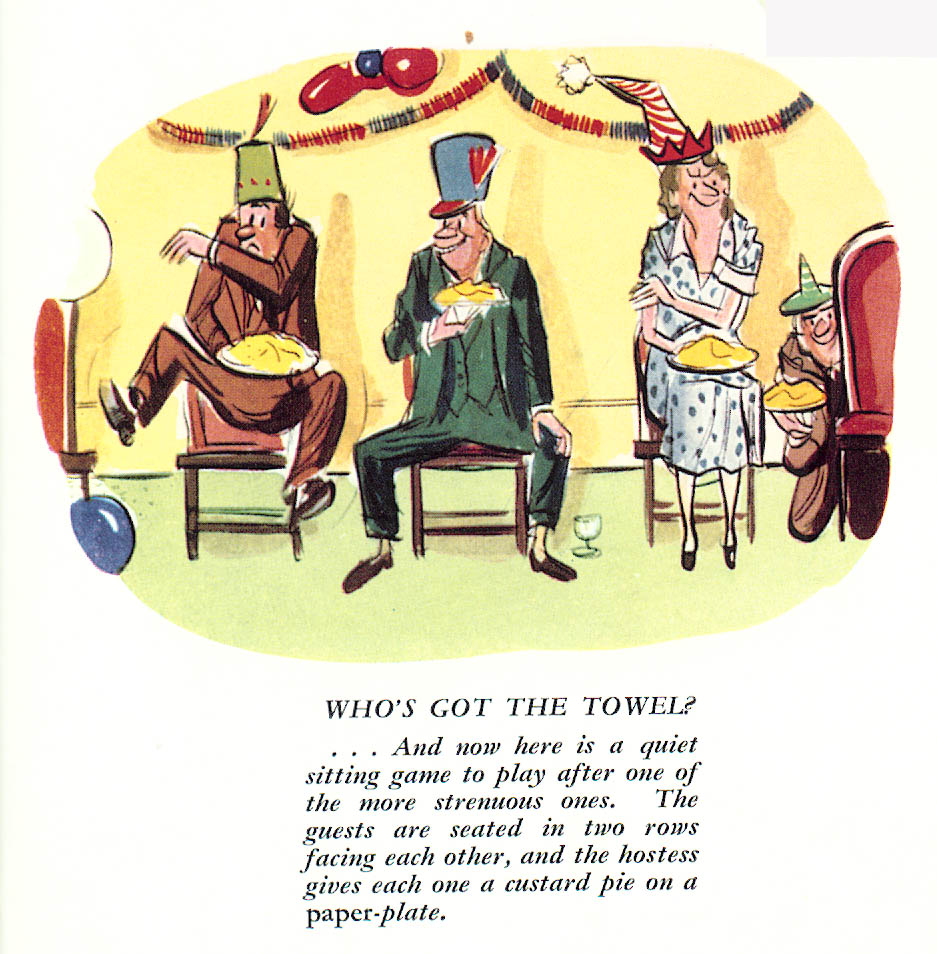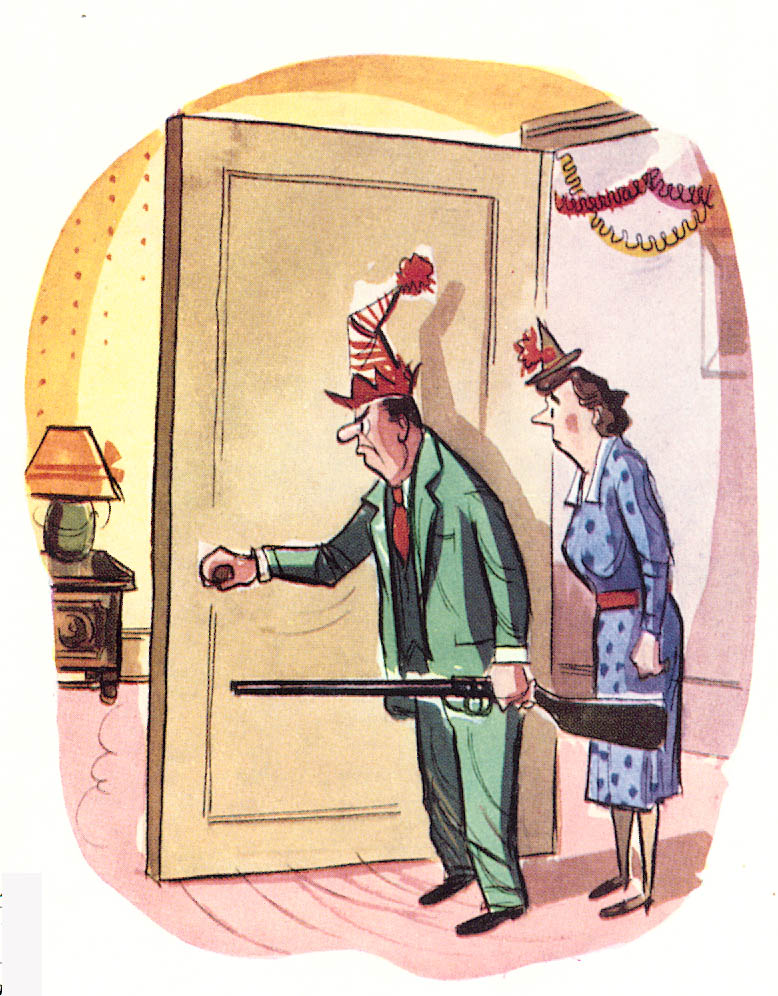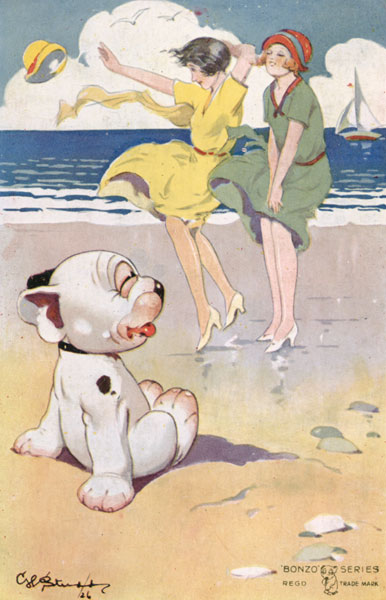Vintage Philip Morris ads (featuring “vintage tobacco”) with pretty illustrations by Edwin Georgi. These are so beautiful, I wish they had made a series of prints like they did with the American Beauties girls, the Northern Paper Mills aka Northern Tissue ads illustrated by Frances Hooks.
Tag: illustration
Skateboarding With Jesus
This reminds me of the time there was only one set of trackmarks from my board and I thought Jesus had let me fall…
No, Jesus wasn’t carrying me like that time on the beach; turns out the bastard pushed past me and kept on going.
Via.
He Earned His Living Exhibiting His Nose
“Strange As It Seems” Thomas Wedders – Yorkshire, Wng. Earned His Living Exhibiting His Nose It was 7 Inches Long!
Well, you know what they say about men with large noses… So his nose was the only thing he could shows at the time. *wink*
Vintage comic drawing by John Hix, who created syndicated comic art oddity drawings similar to Ripley’s believe it or Not under the name “Strange as it Seems.” Via Grapefruit Moon Gallery.
See also: Wedders at Riplye’s.
Cheap Thrills Thursday: I Love The Bobbed-Hair Bimbos
Man’s Best Friends
I’m not sure
A vintage Ken Colgan cartoon:
A man’s best friends are his wife, his back, and his dog. The back, however, has a reputation of not being as faithful as his other two friends.
Well, at least women were considered faithful — even if they were compared to dogs and “things that work for men.”
Care Of The Back, Industrial Edition, William K. Ishmael, M.D., F.A.C.P. and Howard B. Shorbe, M.D., F.A.C.S., Distributed by Safety Department with Approval of Abbott Skinner, M.D., Chief Medical Officer, Great Northern Railway Company. Cartoons by Ken Colgan, Oklahoma City, Oklahoma.
The Law’s Long Arm (Vote!)
Some people will tell you it’s more important that you vote than who you vote for; I’m not one of those people. But I don’t have a lot of time to perfect this post. So here’s the quick version.
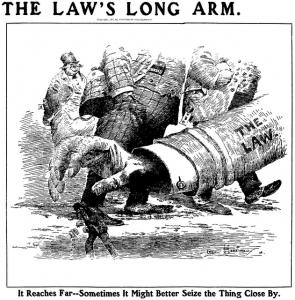 If you have a uterus (or care about anyone who does) you can’t possibly vote for those who cry “Keep government out of my business!” and then sticks their hands in your vagina. No regulation for corporations, less involvement in the boardroom — but more restrictions in the bedroom?! *snort*
If you have a uterus (or care about anyone who does) you can’t possibly vote for those who cry “Keep government out of my business!” and then sticks their hands in your vagina. No regulation for corporations, less involvement in the boardroom — but more restrictions in the bedroom?! *snort*
Don’t fall for the Republicans or the Tea Party; vote Democrat.
In this time when fear and intolerance are rampant, people are knee-jerk reacting into some sort of fundamentalism that has nothing to do with fairness, equality or even common sense; the jerks want to control you & your health — especially your female body — to regulate the white male hetero wealthy powerbase of our country.
It’s about eugenics, people. Are you going to vote for that?
Don’t fall for the fears and lies; do vote Democrat.
The rich can access safe reproductive health care, including abortions; the rich can access any health care they wish, including treatments made available by the very genetics and stem cell work they wish to prohibit here. They are not limited — they have the means to travel to and pay for whatever services they wish for themselves or their families.
But not you. You are inflicted with “the poverty” which makes you inferior, and if you vote based on their fearful manipulation of you, then you are like sheep headed to the slaughter.
Don’t let them herd you; be heard and vote Democrat.
Obama and the dems have done more in less than two years than any other administration. Sure, things aren’t where we want them to be, but, as every mother knows, it takes longer to clean up the mess than it does to make it. Want proof? Drop or spill a glass of milk — and then clean it up; it took 8 years to spill this milk, so stop crying and be willing to spend a lot longer cleaning it up.
Vote for the Democrats.
Understanding Female Relationships With Greeting Cards
Greeting cards are primarily a female thing; I don’t think any sane person would argue this. But I feel the need to elaborate anyway.
First by boasting mentioning my past professional work in the greeting card biz with the fabulous Kat Caverly of NoEvil Productions (makers of Greetums), and so asserting my insider knowledge.
Second, by sharing the anecdotal evidence of how this past summer my 13 year old daughter, who spent an hour or more with her grandparents looking at and selecting greeting cards for our annual family birthday party (which combines all five of our May 30 – June 29 birthdays), was brought to tears upon the discovery that the nine year old boy had casually tossed his birthday cards into the waste can in his bedroom just a few days later. (Hey, he’s nine; I’m just happy they made it into the proper receptacle rather than being strewn about the floor.)
And third, the strong female demographic is well documented in The Very Best from Hallmark: Greeting Cards Through the Years, by Ellen Stern.
Since greeting cards are the commerce of females, you can learn a lot about women from the history of greeting cards; perhaps doubly so:
“What we make is bought to be given away,” says Bill Johnson, the member of Joyce Hall’s ingenious and loyal band who was head of public relations from 1966 to 1985. “And that’s a lot different than women’s shoes. When you buy shoes, you only have to please one person. When you buy a card, you have to please the sender and the recipient.”
Seen in that light, it’s difficult not to take a dim view of The Very Best from Hallmark: Greeting Cards Through the Years author Ellen Stern’s comment, on page 82, regarding the “poor working girl” cards.
As early as 1910, Marie Dressler was singing “Heaven will protect the working girl.” A lot she knew. The working girl has always been the very model of self-reliance… and self-pity.
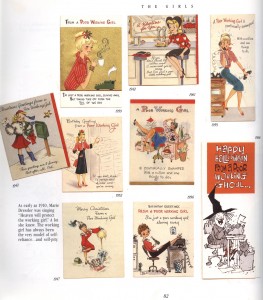 “Self-pity?” Why is it that such woman-to-woman commiseration is so poorly understood, yet the author admits such commiseration in the Hard Times chapter devoted to greeting cards of The Great Depression, saying, on page 129, “During the depression, it was a plight to be shared. Not even greeting cards could escape the reality of rumbling stomachs and tattered clothes.” Certainly working women would like to acknowledge to one another their own workplace plight.
“Self-pity?” Why is it that such woman-to-woman commiseration is so poorly understood, yet the author admits such commiseration in the Hard Times chapter devoted to greeting cards of The Great Depression, saying, on page 129, “During the depression, it was a plight to be shared. Not even greeting cards could escape the reality of rumbling stomachs and tattered clothes.” Certainly working women would like to acknowledge to one another their own workplace plight.
Also the demeaning use of “working girl” rather than “working woman” shows something of Stern’s stance; even if the old cards referred to adult employed females as “working girls,” Stern could have expressed her regard for the phrase with quotes surrounding the derogatory phrase.
Stern’s sentiments about self-pitying working women may be accurate based on what’s observable in the book, but wasn’t she herself in 1988 a working woman willing to commiserate and understand the cards presented? Was she getting paid 100% of her authorship dollar that a man who wrote this book would have? Or maybe Stern agreed with the sipping coffee, legs up on desk, images of “girls” at work. Wartime cards were of a battle understood; but I guess the battle of the sexes, of equal respect in the workplace, of equal work for equal pay, was a battle Stern wasn’t into.
But perhaps most intriguing of all are the plethora of lingerie themed cards.
You might be tempted to pass them off as simply risque — sexist use of the female form for men; but remember, greeting cards are a woman’s thing, bought by & given to other women. And so maybe it seems a women’s lingerie thing you wouldn’t understand…
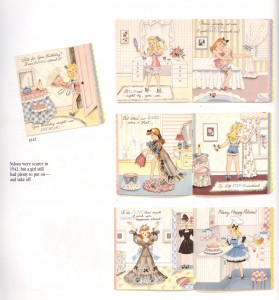 While Hallmark was run by a man — or men with a few “poor working girls,” and can be seen as The Man, you can’t deny the serious dedication the company had to targeted marketing. They spent oodles of dollars and gobs of time focused on what sold and who bought it — including focus groups of women. If women weren’t buying the charming illustrations of women in their dainties and picture-laden puns of underthings, Hallmark wouldn’t have made them. Let alone so many of them.
While Hallmark was run by a man — or men with a few “poor working girls,” and can be seen as The Man, you can’t deny the serious dedication the company had to targeted marketing. They spent oodles of dollars and gobs of time focused on what sold and who bought it — including focus groups of women. If women weren’t buying the charming illustrations of women in their dainties and picture-laden puns of underthings, Hallmark wouldn’t have made them. Let alone so many of them.
And heck, I’ll admit I’m charmed by such illustrations & puns.
So one has to at least include the probability that women’s adoration of the female form, our so-called bisexuality or ability to be more fluid in our sexuality, has been around for a long time and perhaps has as much to do with “sex sells,” sexist ads, and our culture’s consumption of pornography as the patriarchy does.
The Very Best From Hallmark: Greeting Cards Through The Years
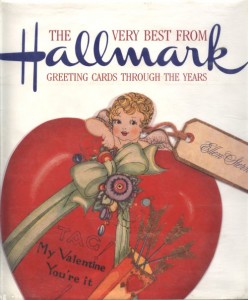 The Very Best from Hallmark: Greeting Cards Through the Years, by Ellen Stern, is not a collector’s guide, really; there are no prices or discussion of the secondary market at all. However, savvy collectors and historians who view the world through pop culture vision glasses can learn much from this out of print book published in 1988, which is approaching collectibility itself.
The Very Best from Hallmark: Greeting Cards Through the Years, by Ellen Stern, is not a collector’s guide, really; there are no prices or discussion of the secondary market at all. However, savvy collectors and historians who view the world through pop culture vision glasses can learn much from this out of print book published in 1988, which is approaching collectibility itself.
Collectors who are lucky enough to find their cards represented here may ascertain their card’s publication date. Or identify potentially rare cards, such as those which were pulled as failures — like the time Hallmark inadvertently used an X-ray of human bowels rather than the intended heart X-ray for its “heart’s in the right place” card. (Pulled cards would mean fewer in circulation and even rarer finds for collectors — worthy of higher prices, certainly.) But mainly, collectors will gain more insight into greeting cards — in general, and, especially, the Hallmark variety.
(Clearly The Very Best from Hallmark is a corporate sanctioned publication, but I don’t think anyone can challenge Hallmark’s market share superiority or the company’s longevity — both of which speak to the book’s genuine insight into a culture that buys so many greeting cards.)
Ellen Stern’s introduction to the book gives a very brief history of the greeting card along with a rather erratic telling of the story of Joyce C. Hall, Hallmark’s founder. I realize Stern’s job of taking centuries of greeting card history and stuffing it — along with greater detail of the Hallmark company specifically — into a mere 12 pages (including space for images) is no small task; but something’s wrong when I have to re-read paragraphs over again to understand what she’s saying. However, when Stern gets into the aspects about the workings of Hallmark, from art department design to product marketing, she shines.
Here are a few gems:
On a trip to New York in the 1940s, accompanied by Hallmark’s head of corporate design and a couple of artists, [J.C. Hall] would visit Lord & Taylor, Bloomingdale’s, and Bonwit Teller — and there be ushered out because the group was taking too many notes on colors, styles, and windows displays. Everywhere he roamed he analyzed, assessed, and appreciated the wares and wonders…
I do this myself; but as I do my note-taking without entourage, I’ve never been escorted out.
In the 1940s and fifties, in department stores and card shops, Hallmark clerks adhered to a dress code — wearing only black, brown, navy, or charcoal gray — so as not to compete with the merchandise.
As a person who’s served a long retail sentence, I find that fascinating — and wonder why they changed the policy.
Dean Walley was a journalism major at the University of Missouri before joining Hallmark. Now one of the senior writers, he’s also the man who offers a marvelous course in American manners — and manners of speaking — to the artists and writers. Projecting slides of old cards from Hallmark’s archives on a small screen, he will rhapsodize on a colloquialism here, chuckle at an antiquated idea there, applaud an adjective, blast a dialect. He loves the high-falutin’ use of the word “grand,” the bravado of “staunch,” the evasiveness of “To a certain cheerful someone.” His sentimental olio embraces cards of every era, every province: a bluebird of the twenties chirping “Please Hurry Back,” a Dutch girl saying “To mine friend,” a tippler saying “Happy Birschday to You,” greetings to the dentist, a quack from Donald Duck. The point is that Hallmark writers must keep up with the language as it changes.
If you collect or read any vintage printed matter &/or antique publications, you know how true — and puzzling — this is; language is often as ephemeral as old paper itself. (Oh, how I’d love to dish with Dean Walley!)
And that’s all before we get to the over 750 images of vintage Hallmark cards.
Looking at the images, I reaffirm my love of vintage illustration. But it’s not all charming — or at least not all simply charming. There are things to note about our culture here.
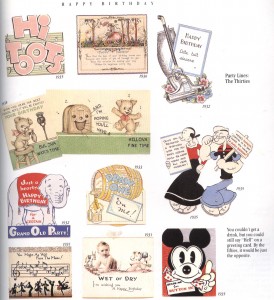 Some of these things are noted by the author, like on page 45 where among the images of vintage greeting cards (birthday cards from the 1930s, shown at left) the author observes, “You couldn’t get a drink, but you could still say ‘Hell’ on a greeting card. By the fifties, it would be just the opposite.”
Some of these things are noted by the author, like on page 45 where among the images of vintage greeting cards (birthday cards from the 1930s, shown at left) the author observes, “You couldn’t get a drink, but you could still say ‘Hell’ on a greeting card. By the fifties, it would be just the opposite.”
There have been many changes in deed; and our general history has been documented in this specific form of ephemera. In the forward, Stern has this to say:
The ups and downs of our economy, our hemlines, and our mood: such is the grist for the Hallmark mill. The days of our lives, as you will see on the following pages, are reflected in the cards of our days. Prohibition, fitness, the income tax, Vietnam, the G-man, the G.O.P., women’s suffrage, women’s lib, the radio, the jukebox, the computer, talkies, hula hoops, the Atom bomb, the gray flannel suit, the mini skirt, My Fair Lady, Huey Long, Mickey Mouse, the TV quiz show, the fireside chat, the Duchess of Windsor, Miss Piggy, Sputnik, the beatnik, Charlie Brown, Charles Lindbergh, canasta, Mussolini, rationing, cowboys, hippies, hillbillies, bobby soxers, flappers, the Dionne Quints, Valley Girls, the airplane, the blackout, the Crash. The seasons come, the seasons go, and Hallmark is up to the minute.
“Actually, says Bill Johnson [head of Hallmark’s public relations from 1966 to 1985], most cards reflect more everyday life than national events. And a national event does not in itself bring about a card. Most are ignored by the greeting card industry. It would be a folly to pretend that by looking at cards from 1920 to 1935, say, you’d get a full idea of what was going on in America.” But you get a pretty good one.
I think that’s true. Especially what Johnson says. But it’s here that we learn some things which are (rather miraculously) not noted by the author.
As you critical thinkers probably have noticed, there’s not a damn mention of civil rights. I didn’t not present them; they are not in the book (even though Beatniks garner two pages worth of attention).
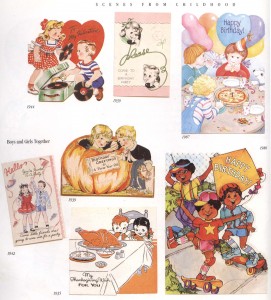 OK, I’ll admit a “civil rights” themed greeting card is probably not too likely to become a best seller, but where are the persons of color? In the over 750 images of “Hallmark’s best greeting cards, spanning seven crowded decades of American life,” I found exactly two cards of what I’ll call non-white people — that weren’t Mussolini or other rather racist depiction of foreign public political figures. I’m sure too that Hallmark made many more racist cards once upon a time — which they were too ashamed of to share in the book — but to not address the whole issue of race is odd… At least show more than two cards with black folks, right?
OK, I’ll admit a “civil rights” themed greeting card is probably not too likely to become a best seller, but where are the persons of color? In the over 750 images of “Hallmark’s best greeting cards, spanning seven crowded decades of American life,” I found exactly two cards of what I’ll call non-white people — that weren’t Mussolini or other rather racist depiction of foreign public political figures. I’m sure too that Hallmark made many more racist cards once upon a time — which they were too ashamed of to share in the book — but to not address the whole issue of race is odd… At least show more than two cards with black folks, right?
Whether or not Hallmark does or doesn’t make cards which are more reflective of our society is research I’ll leave for others; but we don’t see much represented here.
Then again, perhaps that’s a problem best explained by the context of the time at which this book was published.
This 1980s book makes clear choices to mention and display the G.O.P. several times (yet I found no clear representations of the Democratic Party) and the republicans of the 80’s certainly weren’t building their platform on civil rights; ultraconservative republicans disliked Affirmative Action and, in a backlash against it, President Ronald Reagan cut funding for the Equal Employment Opportunity Commission and the civil rights division of the Justice Department. Of course, I could be connecting some dots based on those missing dots, creating an image that doesn’t really exist, but I don’t think so. I think the G.O.P. populist pride slant is part of the book’s construction.
But that doesn’t necessarily detract from the book either. At least not if you are a critical thinker. This book may have intended to document our American history through the social connection of greeting card commerce up to its then present day of 1988, but it also documents, through its selections and omissions, a view of that once present day of 1988 which is now a part of our history.
If this is the sort of stuff that fascinates you half as much as it does me, get a copy. (The book is not as common as you might think for a 1988 title; however, it’s not as rare as the Amazon listings might indicate, so check for it at eBay.) If you’re not sure yet, stick around; I’ll be discussing some more from this book during the next few weeks. (If I make the posts really long, I know you won’t read all of it!)
Whatjamacallit Wednesday: Myrtle The Turtle
My mother is the one who started it, this tradition of making up silly songs to sing to your kids. I’ve twisted it onto singing songs about my children, usually silly rhymes sung to melodies from television themes songs — like Hunter’s Boo-Bear, Meet The Boo-Bear based on The Flinstones.The kids used to love it, but then they grew older and not-so-much… I must now wait for them to grow old enough to appreciate them again.
One of Allie’s favorites was grandma’s Myrtle The Turtle who would “swim any hurdle — just to be near her Allie.” So when I found this Myrtle The Turtle, a story by Ernestine Cobern Beyer (illustrations by Mildred Gatlin Weber), inside the July 1964 issue of Wee Wisdom, I instantly thought of Allie and began singing the song. Thank goodness I was home alone flipping through the pages & singing, or… Well, let’s just say that if the kids who know the songs and presumably love me no longer can rise above my crazy singing to enjoy the special memories created by such silly songs, how can I expect the general public to?
My mom bought me this vintage copy of Wee Wisdom when we were out antiquing together because she know how much I love Great Danes. Now that I’ve found Myrtle in here, I wonder if she’ll want it back? …I myself am tempted to remove the Myrtle pages (ack!) and frame them for Allie for Christmas. Better yet, just make really high quality scans, print two great copies and frame a set for each of them… (If either one of them pop in here, all bets — and gifts — are off.)
Cheap Thrills Thursday: Of Storks In My Collection & Contraception
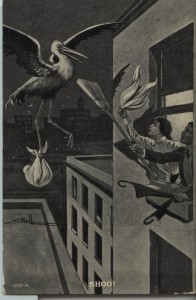 A few months ago, a gentleman contacted me about one of the items in my “vintage stork” collection. The antique postcard, postmarked 1908, depicts a couple shoo-ing away a baby-delivering stork; the gentleman was James M. Edmonson, Ph.D., Chief Curator of the Dittrick Medical History Center and Museum at the Case Western Reserve University; and he was asking if I could get him a larger high resolution scan of the postcard for inclusion in a new gallery the museum was working on.
A few months ago, a gentleman contacted me about one of the items in my “vintage stork” collection. The antique postcard, postmarked 1908, depicts a couple shoo-ing away a baby-delivering stork; the gentleman was James M. Edmonson, Ph.D., Chief Curator of the Dittrick Medical History Center and Museum at the Case Western Reserve University; and he was asking if I could get him a larger high resolution scan of the postcard for inclusion in a new gallery the museum was working on.
Could I? Would I? Um, this is exactly the sort of stuff that floats my boat! Not only is my object connecting me with others, with history, but the gallery is for Virtue, Vice, and Contraband: A History of Contraception in America — a new exhibit at the Dittrick Medical History Center and Museum that examines 200 years of the history of contraception in the United States.
So, naturally I did whatever I could to get the chief curator the graphic. And here it is, on the left-hand side of the display designed by guest curator Jimmy Wilkinson Meyer from The College of Wooster:
The exhibit (launched September 17, with Helen Lefkowitz Horowitz, author of Rereading Sex: Battles over Sexual Knowledge and Suppression in the 19th Century America, at the Zverina Lecture), depicts the social and cultural climate that influenced birth control decisions in this country, says James Edmonson, chief curator at the Dittrick:
The exhibit reveals a longstanding ignorance of essential facts of human conception. For example, that a woman’s ovulation time was not discovered until the 1930s by two doctors, Kyusaku Ogino in Japan and Hermann Knaus in Austria. Before and after this finding, desperate women went to great length to prevent pregnancies. The exhibit explores less well known (and dangerous) methods such as douching with Lysol or eating poisonous herbs like pennyroyal, as well as conventional means such as the IUD or the Pill.
“A remarkable body of literature was available to assist newly married couples and others,” says Edmonson. “These books were not displayed publicly, on the coffee table, but hidden in a private place.”
He cites examples such as Charles Knowlton’s Fruits of Philosophy, or the Private Companion of Young Married People (1832) and the popular 18th century book on anatomy, reproduction, and childbirth, Aristotle’s Masterpiece.
In addition to literature, the exhibit draws upon and incorporates the vast collection of contraception devices donated to the university in 2005 by Percy Skuy. The Canadian collector had amassed the world’s largest collections of such devices over the course of four decades.
The exhibit starts in the early 1800s, before Anthony Comstock, lobbied Congress to pass the Comstock Act of 1873, responding to what he viewed as a moral decline after the Civil War.
“It was a watershed year. The Comstock Act made it illegal to sell contraceptives or literature about contraception through the mail,” says Edmonson.
While Congress legally barred contraception, a black market for such products and literature flourished. Comstock went undercover to search out and turn in violators of his law in his crusade to stamp out what he defined as smut and obscenity.
In the early 20th century, women’s advocate Margaret Sanger opened a birth control clinic and research institute, flaunting the Comstock Law. Eventually her efforts evolved into the Planned Parenthood Federation of America.
The exhibition highlights some ancient methods of birth control and presents information about the influence of religion on contraception.
“We wanted to have a multi-faceted look at the topic of contraception,” Edmonson says.
Future plans are to expand this exhibit with a companion book, a kiosk where additional information can be accessed on the birth control collection, and an extensive online site available worldwide.
I love that my old postcard is hanging out with Margaret Sanger — well, it does that here at home, but now it’s part of the larger public story. And that’s cool.
Now I must get myself to Cleveland, Ohio to see it!
Cheap Thrills Thursday: Lessons In Literacy With Strawberry Shortcake
Let’s see… When this Kid Stuff Records book (copyright 1980) & record (copyright 1981) set of Strawberry Shortcake’s Day in the Country came out, I would have been 16 or so, which naturally explains why I never owned any Strawberry Shortcake stuff back in her heyday. Why the stuff seems to gravitate towards me in some sort of kitschy retro-grade, is a complete other issue — like Smurfs, for which I have no sense of nostalgia either, I do not yet know why.
Anywho, I grabbed this SEE the pictures HEAR the story READ the book set for about a buck, as I recall, making it another cheap thrill.
But, like most things I touch, it provokes a few questions…
Why were the pages merely black & white pictures? Were you also supposed to COLOR the illustrations?
More profoundly, I wonder what’s become of the progression of these kids’ books… When my eldest was little, the book & record sets had morphed to book & tape cassette sets, then to those (incredibly annoying) books with the computer chips that made noises (whenever you saw the icons in the text, you pressed the corresponding button for an audio clip). And now, the closest things I’ve seen are the video games which mainly use “pens” to read the words or stories (or, sometimes, have buttons much like those electronic books).
If the concept was based on the philosophy that being read to encourages children to become readers (and these book & audio sets were to assist parents who, for whatever reason, had no time to read to their children), then I think that’s been lost along the way. Lost with the interactivity — broken down into amusing “fun” and sold as “learning” yet.
As Gabriel Zaid (and translater Natasha Wimmer) so eloquently & concisely described in So Many Books, reading is a very complicated learned process involving the interpretation & integration of units of complex meaning into a cohesive whole. This is why listening to stories is so powerful — it is more natural, more easily intellectually and even emotionally digested. But once hooked on stories, a person wants to have the independence to select & enjoy on their own; they develop the love of reading.
So why add further fragmentation to the process? Why break reading down into even more chunks, such as distracting gimmicks of auditory bells & whistles? Why add other activities to it, such as pushing buttons, touching screens, using wands — removing one’s focus not only from the story as a whole but the page itself?
Pepsi Logo Is Actaully A Fat Guy’s Stomach
I’m a Diet Coke girl, myself; so when I saw Lawrence Yang’s response to Pepsi’s logo, I really, really enjoyed it. *wink*
Whatjamacallit Wednesday: Your Dreams Explained
Popular Racism, 1857
In 1857 (a year before Darwin’s The Origin of Species), creationists Dr. Josiah C. Nott and George Gliddon published Indigenous Races of the Earth, which included illustrations comparing the skulls of “Greeks,” “Negroes,” and Chimpanzees to suggest black people ranked between white people and chimps. All copies of Indigenous Races of the Earth were pre-sold before they were even printed and the book then went on to become one of the best selling books of the time, including being published in many languages.
Are You Having A Party?
From the November 19, 1953 issue of The Tatler & Bystander (the weekly from Illustrated Newspapers, LTD., London; not the “News & Gossip About Books” Tatler put out by The Putnam Book Store, New York), a three-page illustrated sketch by Alex Graham with humorous party tips for your Christmas party.
Cop And Robbers
The host suddenly dials 999 and announces that “some joker has snitched his watch.” Anyone who refuses to be searched is called the “thief,” and is “arrested on suspicion” by the police when they arrive. A prize is given for the best solution as to how the “robbery” was effected.
This is a very good game with which to end a successful party…
This is “Pass The Pencil”…
Hunt The Hooch
This is one the boys can play while the ladies are taking off their coats. The host announces he has “lost” a bottle of whisky and the guests are a ‘search party.” The whisky is found in some not-too-difficult place (on the sideboard, for instance) and each member of the “search party” is given a small prize.
Just when you think you understand British humor, then there’s this game, which is a serious game here in the US — it’s even standard at showers, isn’t it?
Can It Be Ethel’s Garter?
Collect a number of small assorted objects (e.g. tap-washer, sprocket-wheel retaining pin, cast-off dentures, rabbit’s skull, bicycle lamp-holder, etc.) and place each in a paper bag. The bags are then passed round, and players have to identify the objects by touch alone.
Small prizes (e.g. tap-washer, sprocket-wheel retaining pin, cast-off dentures, etc.) for fullest correct lists.
“Who’s Got The Towel?”
And my personal favorite…
Where’s Young Simonds And Our Effie?
Two of the youngest guests — a boy and a girl — leave the room, and after half an hour or so, the remainder of the party go to search for them.
1950’s April Fool’s Pin-Up
A vintage French mechanical greeting card with a jungle girl pin up on the cover.
When you open it up, will she be naked?
Nope! There’s a… fish?!
I guess that’s the April fool’s joke. Bah, the French. They also loved Jerry Lewis.
A Dog Day Afternoon At The Beach
A George Ernest Studdy illustration (titled Just sitting on the sands enjoying the breeze) featuring Bonzo enjoying the view up ladies’ skirts.
